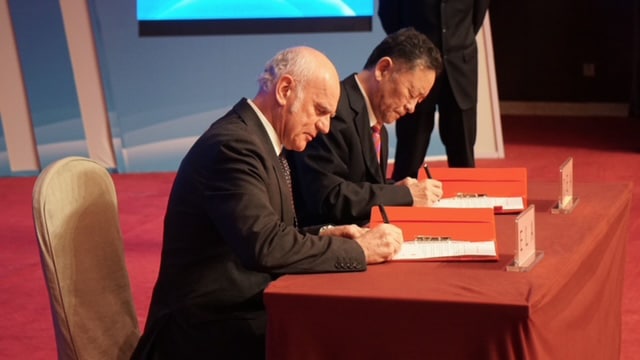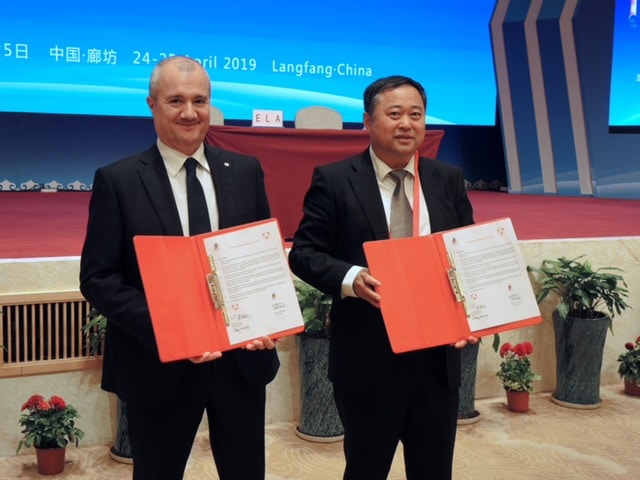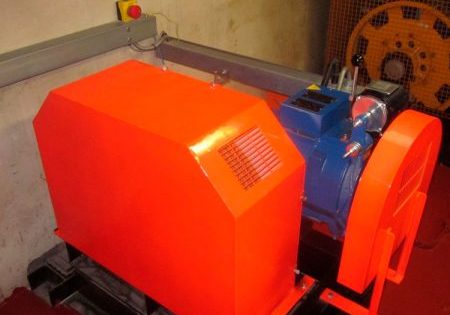Closing the Distance Between Europe and China
Feb 1, 2022

Lift associations ELA and CEA align on interpretation of standards.
by Christian de Mas Latrie
In September 2020, an information note about international standards for the safety rules for the construction and installation of lifts (ISO 8100-1 and ISO 8100-2) was prepared by the European Lift Association (ELA) and the Chinese Elevator Association (CEA). The CEA, based in Langfang, China, is the main national lift association, with more than 500 members, including small and medium-sized enterprises (SMEs). The size of the Chinese lift market is quite staggering: According to 2020 figures, China has an estimated 8 million lifts in operation, with more than 700,000 new units installed per year.
The ISO 8100-1 and ISO 8100-2 information note by itself goes a long way toward providing guidance on how to interpret these particular international standards. Moreover, this successful project was only the first of a long list of prioritized tasks designed to collectively advance the interests of the global lift market.
The Need for Cooperation
On April 24, 2019, ELA and CEA, represented by their respective presidents, Roberto Zappa and Li Shoulin, signed a Memorandum of Understanding (MoU) based on equality and mutual benefit. The MoU is designed to promote and strengthen cooperation between the two associations, with the aim of reaching mutual understanding of positions on specific issues relating to energy and environment, standardization, safety and accessibility.
From the perspective of ELA, it is expected that the European association’s experts will benefit by getting to know their Chinese counterparts and understanding how they tackle and assess safety risks. The questions raised by the Chinese experts on the application of ISO 8100-1 and -2 allowed ELA’s experts (and members who will read the information note) to better understand the safety requirements listed and explained in the document, and hence apply ISO 8100-1 and -2 in a more comprehensive way.
Chinese experts raise excellent technical questions on lift standards and, quite often, the answers and clarification given by the European and international standardization organizations (CEN/TC 10 and ISO/TC 178) are integrated into the next revision for the benefit of the entire global lift industry.
Chinese experts also benefit from a wider view of the possible safety risks on lift equipment and data on the accidents that happen outside China. Through the collaboration exercises, they are discovering how passengers in countries outside China use lifts and escalators, and, in tandem, they are also advising ELA experts on how to address the particular challenges of intensive unit usage due to high population density when drafting standards.
ELA and CEA are committed to paving the way forward for greater cooperation and understanding between these two major representatives of the lift, escalator and moving walk industry.


The History of European and Chinese Cooperation
Ever since the 1990s, the idea to spread global use of the European standards EN 81-1 for electric passenger and EN 81-2 for hydraulic passenger lifts was in the minds of experts. ISO TC 178, the technical committee for lifts and escalators, therefore, decided to launch a project in this direction. Both these standards, particularly EN 81-1, were already used as a reference for the lift industries of many countries outside Europe, as they were relatively easy to apply.
In 1995, ISO TC 178 set up and launched the Global Technical Barrier-Free Trade program with the objective of developing ISO standards in support of technical and conformity assessment harmonization around the world. In 2005, a cooperation agreement was signed between CEN/TC 10 and China’s standardization body SAC/TC 196.
By 2016, these two European standards for lifts were revised in the frame of the final edition of the European Lifts Directive No. 2014/33/EU (since renamed EN 81-20 and EN 81-50), and the participation of non-European countries was sought.
ISO/TC 178 further enhanced its mission of harmonizing global lift standards by launching a process for the transformation of these EN 81-20/-50 into EN ISO standards, hence, EN ISO 8100-1 and EN ISO 8100-2, which covers EN 81-20/-50 scopes. This transformation is now underway between CEN TC 10, the current leader and group responsible for these standards, and ISO/TC 178. By the end of the project, ISO/TC 178 will be the group leading and responsible.
Considering the huge lift market in China and the interest of Chinese experts for European and ISO standards for lifts, ELA and CEA then decided to join forces with the goal of developing better and more frequent information exchange on topics of mutual interest.
The ISO 8100-1 and ISO 8100-2 Task Force
Among the priority topics established between ELA and CEA, the application of ISO 8100-1 and ISO 8100-2 was first on the list. The resulting “information note on the application of ISO 8100-1 and ISO 8100-2” provides background and rationale on requirements of the standards and guidance in line with good engineering practices that will foster a general understanding of the requirements.
The commitment of both ELA and CEA experts who worked on the draft information note has been impressive, despite the significant additional workload on top of their normal activities for their respective employers.
They not only spent time on the joint meetings but also on preparing for the meetings, on proposing new draft sections and on reading the entire draft gradually as progress was made. Meetings were mostly held virtually, in English, and the inputs provided by the Chinese experts were both efficient and meaningful.

An Eye on Global Collaboration
With the close of the first successful joint project, the next topics on the priority list include the Internet of Things (IoT), Conformity Assessment Procedures and guidelines on safe working on lifts and escalators.
ELA and CEA are committed to paving the way forward for greater cooperation and understanding between these two major representatives of the lift, escalator and moving walk industry. Indeed, it is even possible that the current global federation (the World Elevator and Escalator Federation), which is intended to promote worldwide cooperation and understanding, could at some point be turned into a global association with stronger shared objectives to move the vision of global cooperation forward in the future.
For this global vision to become a reality, more associations, SMEs and technical experts are needed to contribute to the cross-regional discourse and efforts to improve mutual understanding. To get involved with the industry-shaping work of ELA through its various committees and working groups, get in touch at ela-aisbl.eu/index.php/contact.
Get more of Elevator World. Sign up for our free e-newsletter.









